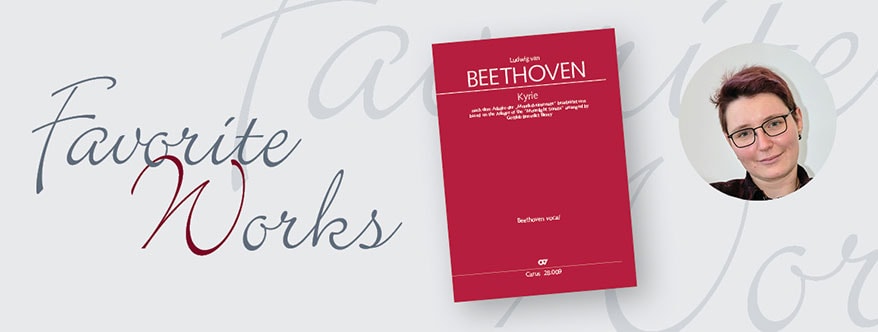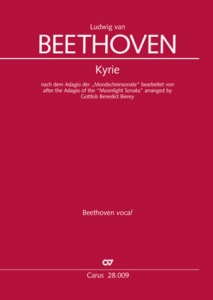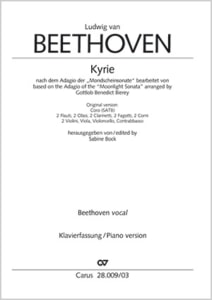An all time favorite in an arrangement for choir
Anja Braun loves the “Moonlight Sonata” not only in the original version for piano, but also als arrangement for choir.
Somehow the 2020 Beethoven Anniversary Year is not quite as high on the agenda as it really ought to be. Corona has completely changed the anniversary year. So it is delightful that Anja Braun’s favorite piece is the Kyrie for choir, arranged by Benedict Bierey after the “Moonlight Sonata” by Beethoven.
I thought for a long time about my ‘Favorite piece’, as I have been able to perform many pieces as an orchestral player and choral singer. But then I remembered that this is the Beethoven anniversary year (even in the time of corona!), and something came to mind straight away: the Moonlight Sonata. This has long been one of my all time favorites, a piece which always brings emotions to the fore.
Benedict Bierey’s transformation of the piece into a Kyrie choral movement perfectly matches these emotions. When you hear the recording on the recent CD Beethoven for choir it really grows on you. I come from a piano background, and I have always been mainly involved in instrumental music. So I have the interpretation and the history of the original in my mind.
The first movement of the Piano Sonata no. 14 op. 27 no. 2 only acquired the name “Moonlight Sonata” after Beethoven’s death, from the music critic Ludwig Rellstab. According to accounts, hearing the first movement reminded him of a boat trip on Lake Lucerne. Beethoven himself gave the whole sonata the epithet “Sonata quasi una Fantasia”, that is, a sonata like a fantasia. The first movement, which is augmented with the text of the Kyrie in this work, is probably Beethoven’s most famous piano work of all. Taken with the other two movements, this sonata has an unusual movement structure. The second movement in sonatas was traditionally regarded as a movement for “relaxation” – slow and sustained in character. Beethoven changed this custom here by composing the first movement more in the manner of a second movement – sustained, slow, emotional.
The Kyrie has been an established part of the Mass in the Catholic church for centuries. It can follow the general confession, and can be recited in Greek or the vernacular. Often it is sung, as in this case. By adding the text of the Kyrie to the Adagio from the Moonlight Sonata, a secular piano sonata became liturgical. And thus Bierey followed the 18th century practice of providing secular melodies with liturgical texts so that these can be used in the Mass. He more than succeeded with the “Moonlight Sonata”. The four-part choral writing lies consistently above the well-known melody. The sustained “Kyrie eleison” supports the sustained theme of the Adagio.
Anyone who loves the well-known piano sonata will also come to love this Kyrie.
Anja Braun studied musicology and German language and literature in Tübingen. She has worked as a student assistant in the Marketing Department at Carus-Verlag since 2019. In her free time she plays keyboard and piano in several bands, and viola in an orchestra.








Leave a Reply
Want to join the discussion?Feel free to contribute!